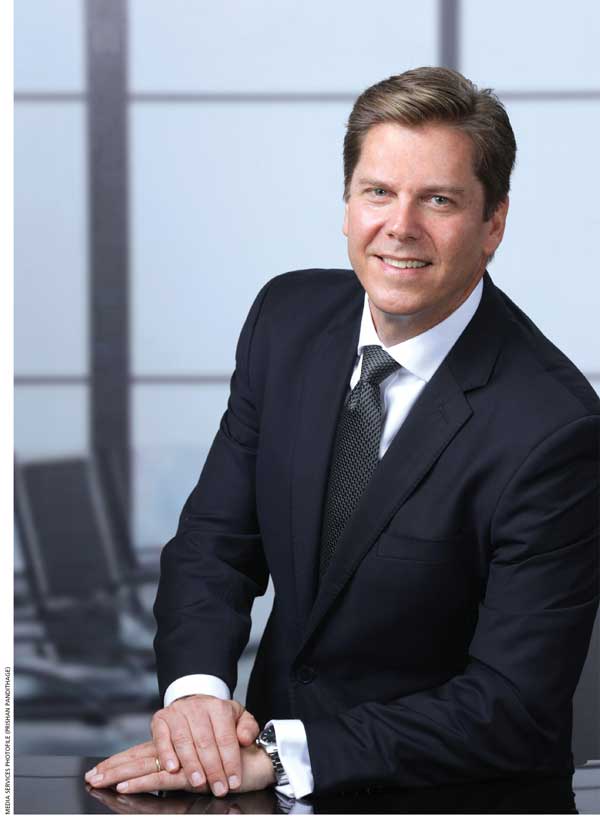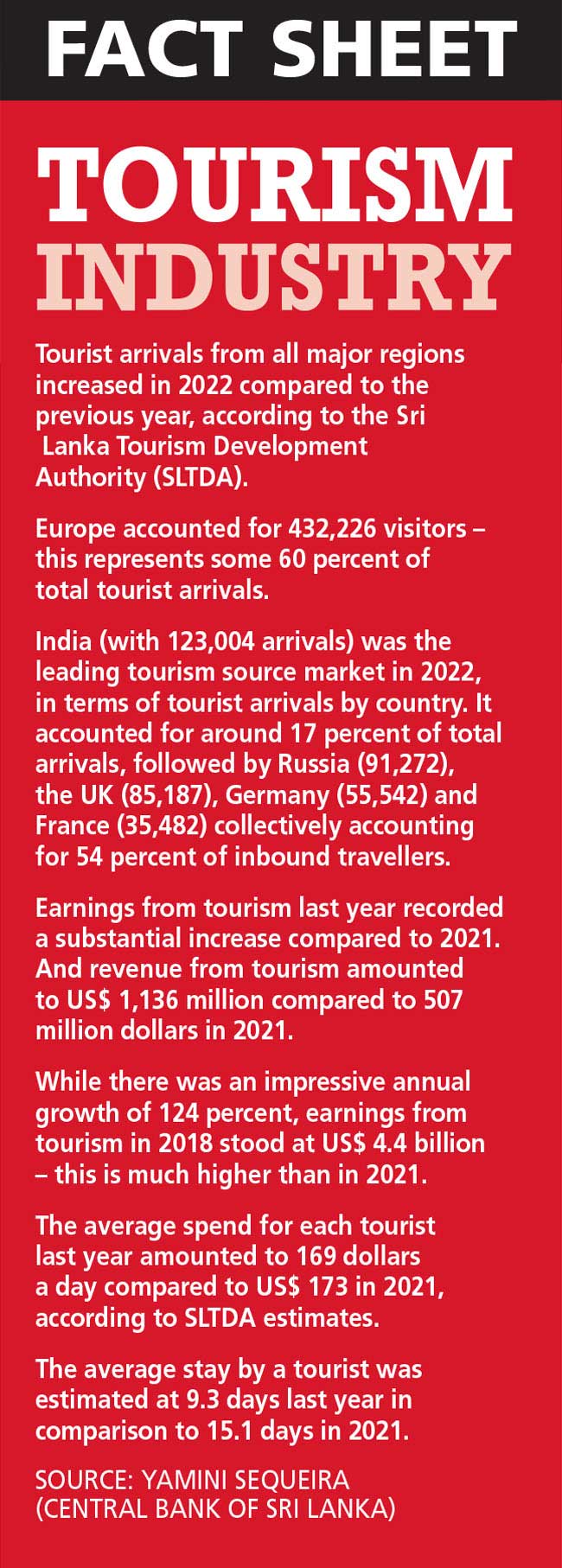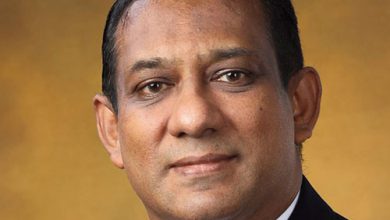TOURISM REVIVAL
THE SPIRIT OF COLLABORATION
Mikael Svensson calls for collaboration among stakeholders to revive tourism
Compiled by Yamini Sequeira
 Recording a milestone of more than 765,000 tourist arrivals by 31 July, Sri Lanka stands poised for revival as a competitive tourism destination that attracts travellers to its pristine beaches, rich cultural heritage and breathtaking natural landscapes.
Recording a milestone of more than 765,000 tourist arrivals by 31 July, Sri Lanka stands poised for revival as a competitive tourism destination that attracts travellers to its pristine beaches, rich cultural heritage and breathtaking natural landscapes.
Mikael Svensson notes: “The rise in inbound tourists is presenting opportunities for the tourism industry and economy. This stimulates consistent excellence in guest experiences, encourages continuous advancements in infrastructure, harnesses innovation and instils sustainable practices.”
“By capitalising on our diverse offerings, we have an opportunity to position Sri Lanka as a ‘must visit’ destination for leisure and adventure,” he adds.
COLLABORATION The recent appointment of Sri Lanka’s Minister of Tourism Harin Fernando as a Vice-Chair to the United Nations World Tourism Organization’s (UNWTO) South Asia Commission will help Sri Lanka contribute to developing policies and initiatives to shape the future of tourism in the island and South Asia.
This is on top of the minister being elected as the Representative of the Committee on Tourism and Sustainability (CTS), and Committee on Tourism and Competitiveness (CTC).
“To sustain this upward trajectory, collaboration among industry stakeholders, government bodies and local communities will further our efforts towards responsible tourism,” Svensson asserts.
He continues: “We must invest in infrastructure development, improve human resource capabilities and continuously promote our unique global tourism offerings to ensure the long-term prosperity of Sri Lanka’s tourism industry.”
STRATEGISING He explains that there are several critical challenges that impede the recovery of the tourism industry – including rebuilding confidence among travellers.
One of the first initiatives in this regard should be to conduct targeted awareness campaigns in Sri Lanka’s key tourism generating markets while recognising intense competition from rivals such as Thailand, Malaysia and Vietnam.
Svensson believes that “prioritising structured, transparent and consistent communication, and implementing a robust targeted plan, will help us create greater awareness and rebuild confidence in key markets that Sri Lanka is a global destination of choice.”
“With rivalry among regional destinations for leisure, and meetings, incentives, conferences and exhibitions (MICE), changing consumer preferences and evolving technology can pose additional challenges,” he cautions.
It is also necessary to address the impact that the migration of skilled workers is having on the national workforce.
 According to recent statistics released by the Sri Lanka Bureau of Foreign Employment, a number of skilled workers aged between 25 and 44 who have migrated were employed in multiple industries and sectors.
According to recent statistics released by the Sri Lanka Bureau of Foreign Employment, a number of skilled workers aged between 25 and 44 who have migrated were employed in multiple industries and sectors.
This wave of migration is jeopardising the sustained growth and success of Sri Lanka’s hospitality sector.
“Nurturing and retaining experienced professionals is critical to maintaining our competitive edge. Sri Lanka’s skilled hospitality talent is much sought after across the globe. So investing in employee wellbeing, providing continuous training and offering competitive employment opportunities will enable us to deliver service excellence that’s on a par with the region,” affirms Svensson.
And he declares: “Having worked as a hospitality professional in Asia, the Middle East and Australia, I understand the vital role that hotel brands play in driving the attractiveness of a destination. To increase Sri Lanka’s attractiveness as a destination, we must create a conducive environment that encourages a cohesive effort by the hotel brands that are operating in the country.”
Offering tax incentives and investor friendly policies can catalyse private sector participation in the tourism industry, by developing new resorts and other projects such as planned leisure attractions, which will cater to diverse traveller preferences.
The establishment of strategic partnerships between the government and private sector to develop collaborative marketing campaigns will help strengthen existing tourism categories.
New traveller segments offering immersive experiences such as healthcare, wellness and culinary tourism are continuously evolving. Sri Lanka’s distinct combination of natural beauty, cultural heritage and hospitality positions it as a viable choice for travellers seeking immersive experiences.
In a post-pandemic world, tourists are seeking destinations that provide ample opportunities for open-air exploration, secluded getaways and meaningful connections with nature.
Furthermore, there’s been a noticeable shift towards sustainable and responsible tourism. Sri Lanka’s commitment to environmental preservation and community engagement resonates with conscientious travellers, who seek destinations that prioritise sustainable practices and generate positive social impacts.
REBUILDING The tourism industry contributes substantially to the country’s GDP and it is imperative for organisations such as hotel schools to play a proactive role in facilitating capacity building.
Urgent interventions, and the acceleration of mechanisms and programmes to nurture local talent, are needed to create a supportive ecosystem and optimise opportunities in Sri Lanka’s hospitality sector.
All tourism industry players need to advocate for regulations to be streamlined so that a favourable business environment can be established. This includes simplified licensing processes, attractive tax incentives and accelerated infrastructure development that will boost Sri Lanka’s competitiveness on the global stage.
The need to embrace technology and harness the power of digital platforms is paramount for staying ahead in today’s dynamic landscape.
And the hospitality sector must invest in cutting-edge technologies such as contactless check-in facilities and personalised digital experiences, which drive operational efficiency and cater to modern travellers’ evolving needs.
A strategically collaborative state, as well as private sector driven destination marketing and promotion campaigns, are needed to sustain long-term tourism growth and development.
 “To grow this sector, Sri Lanka’s infrastructure development needs purpose-built convention centres and modern meeting spaces that can cater to the evolving needs of MICE travellers. These facilities should incorporate state-of-the-art technology, flexible layouts and ample amenities, to ensure a seamless experience for event organisers and attendees,” Svensson recommends.
“To grow this sector, Sri Lanka’s infrastructure development needs purpose-built convention centres and modern meeting spaces that can cater to the evolving needs of MICE travellers. These facilities should incorporate state-of-the-art technology, flexible layouts and ample amenities, to ensure a seamless experience for event organisers and attendees,” Svensson recommends.
He adds: “Diverse entertainment options and relevant attractions in or near these facilities will enhance the appeal of Sri Lanka as an interesting MICE tourism destination.”
A major hurdle the country faces in growing its MICE tourism segment is the high cost of air travel compared to other competitive destinations in the region.
By improving air connectivity and reducing airlifting costs, as well as active engagement with budget airlines and collaborating with low-cost carriers, Sri Lanka will be able to promote itself as a cost-effective MICE destination in the region.
“Collaboration and commitment among the private sector, government and other stakeholders are vital for the development of Sri Lanka’s tourism industry,” Svensson concludes.
The interviewee is the Chief Executive Officer of Cinnamon Hotels & Resorts.






